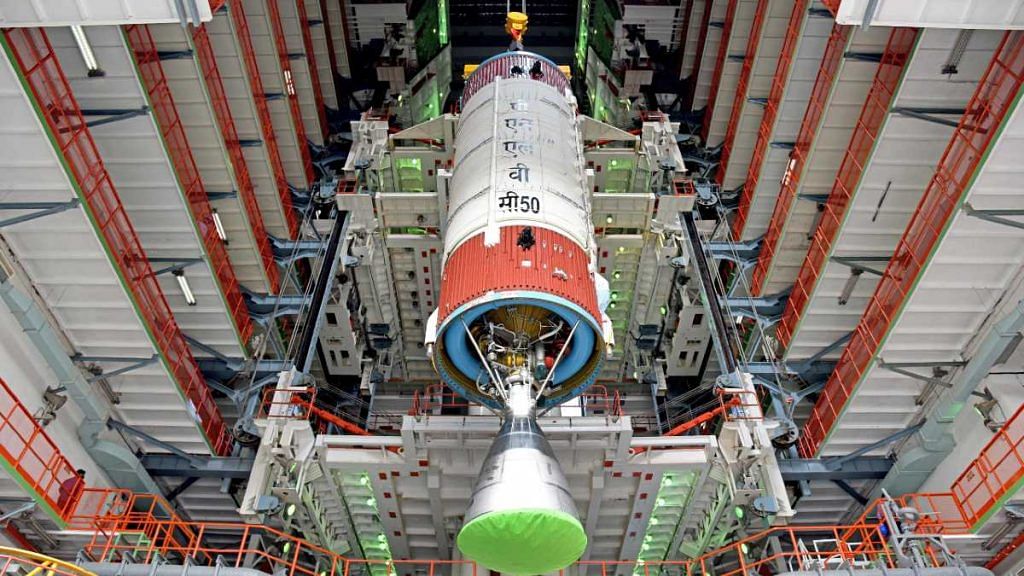Bengaluru: The Indian Space Research Organisation (ISRO) is set to launch CMS-01 communication satellite Thursday from the second launch pad at Satish Dhawan Space Centre (SDSC) at Sriharikota.
The satellite to be launched at 3.41 pm as a sole payload on the PSLV-C50 mission will provide telecommunication services including television, tele-education, tele-medicine, and disaster management support.
The 1,410-kg CMS-01 satellite will provide services in the Extended-C band of the frequency spectrum, and will include expanded and improved telecommunication coverage for both Andaman & Nicobar Islands as well as Lakshadweep. It will also provide improved coverage over the Indian mainland.
Also read: ISRO says India’s Gaganyaan mission likely to be delayed by a year due to Covid
CMS-01 to replace GSAT-12 telecommunication satellite
CMS-01 will be India’s 42nd communication satellite to be placed into orbit.
The satellite, formerly known as the GSAT-12R, will replace the GSAT-12 telecommunication satellite currently in orbit, which was launched in 2011 and has functioned beyond its expected lifetime. GSAT-12 itself was a replacement for the INSAT-3B telecommunication satellite.
CMS-01 will be inserted into the higher, extremely elliptical geosynchronous transfer orbit with an apogee (farthest distance from earth) of almost 42,164 km, before which it settles into its final geostationary orbit of 35,000km and 83 degrees inclination. At this orbit, the satellite revolves around the Earth at the same speed as Earth’s rotation, and appears stationary in the sky when observed from Earth.
The satellite has an expected mission life of seven years.
To launch the satellite, the PSLV launcher will fly in its XL configuration with six strap-on boosters. This is the 52nd flight of the PSLV, and the 22nd in its XL configuration. This will also be the 77th launch from Sriharikota.
ISRO Chairman K. Sivan had earlier said the mission rocket will be followed soon by the launch of ISRO’s new launcher for small satellites, the Small Satellite Launch Vehicle (SSLV), which will carry the EOS-02 (Earth Observation Satellite). The launch of the Geosynchronous Satellite Launch Vehicle-F10 (GSLV) carrying EOS-3 is expected to follow after that.
Also read: India to launch Rs 4,000 cr ‘deep sea mission’ to explore minerals, energy, marine diversity
